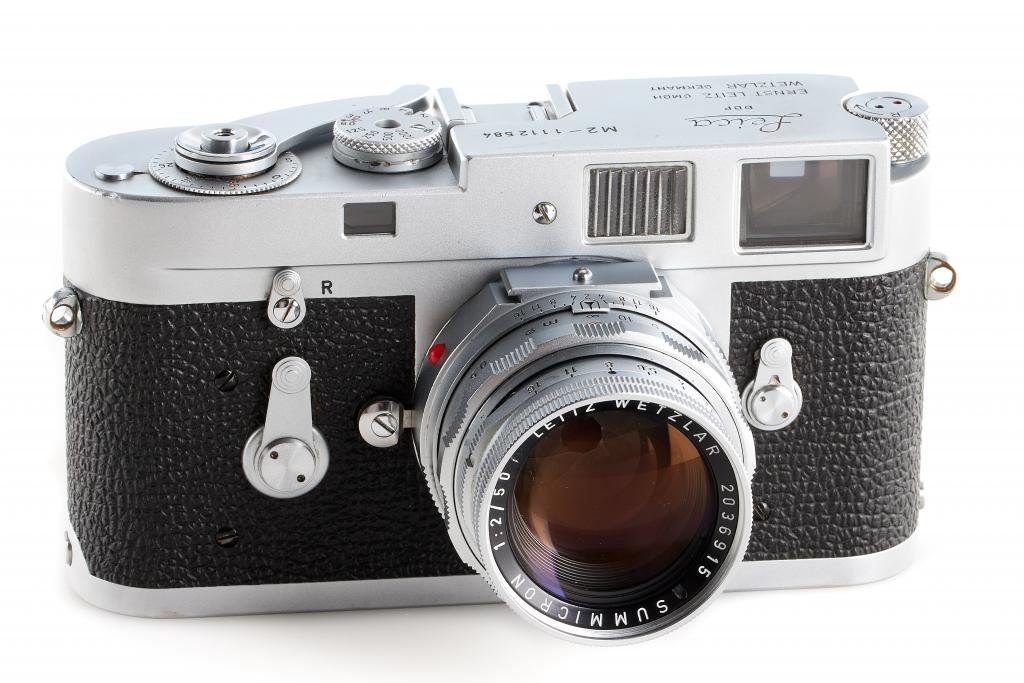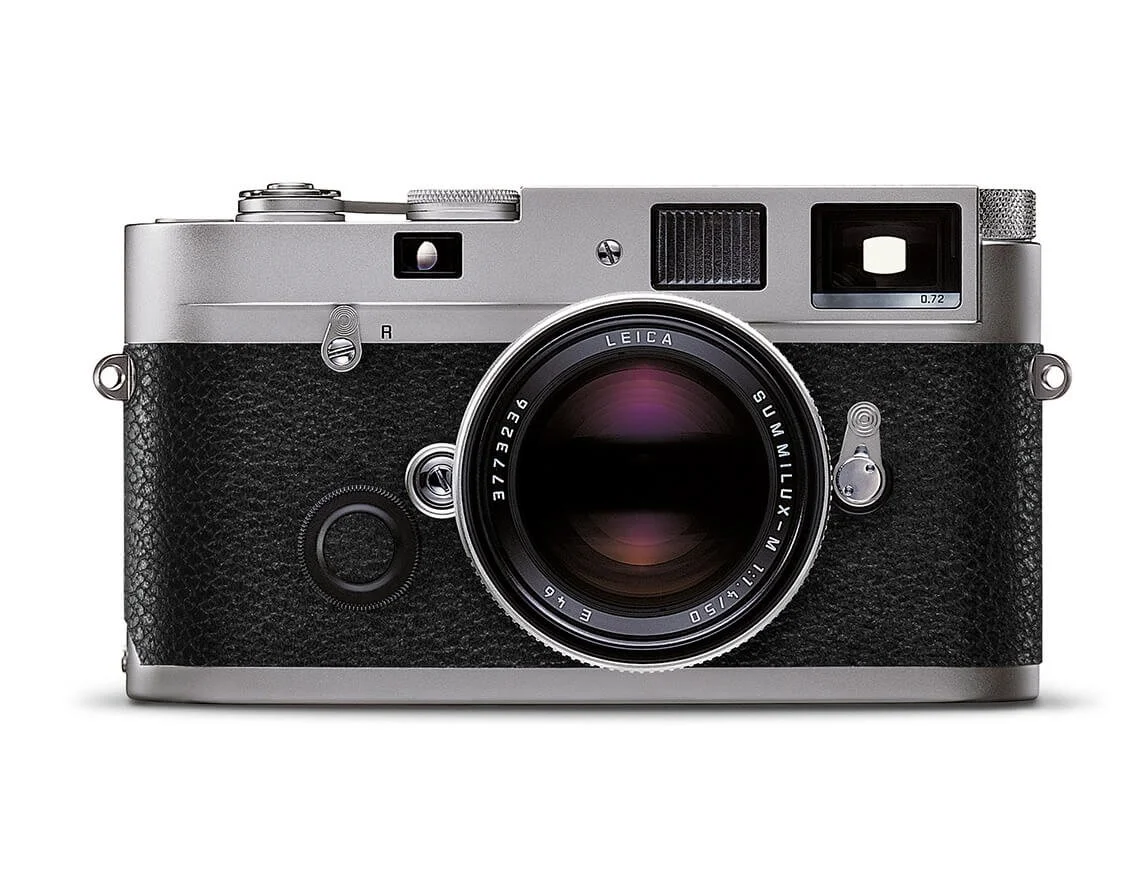Which Leica is Best for You?
The name 'Leica' is almost synonymous with luxury and quality in the world of photography. When diving into the realm of analog Leicas, the variety and rich history might seem overwhelming. Let’s dissect 7 popular models, delving deeper into specs, pros, and cons to guide your purchase.
1. Leica M3 (1954-1966)
©kenrockwell.com
Specs:
Shutter Speeds: 1s to 1/1000s + Bulb.
Viewfinder Magnification: 0.91x.
1/50 max flash speed sync.
Frame line selection: 50/90/135.
M-mount: Leica's current lens mount system, which began with the M3 and provides a quick, bayonet-style attachment for lenses.
Pros:
Renowned for its precision and superb build.
High magnification viewfinder ensures accurate focusing.
The most popular M model, ensuring a broad user base and community support.
For street photographers, the M3's compact size compared to SLRs and the quiet shutter sound make it an ideal choice.
Cons:
Lacks a built-in light meter, making exposure setting a manual task.
Earlier models limit wider lenses due to lack of frame lines.
Parts will eventually become harder to source.
Price:
$1,300 $1,500 (body only).
Ideal for:
Analog purists and those seeking a classic rangefinder experience with a Leica 35mm film camera.
Photographers who want to shoot with a 50mm lens on a Leica film camera.
Photographers looking for a compact 35mm film camera with an extremely classic build and history.
2. Leica M2 (1957-1968)
©classic.leica-camera.com
Specs:
Shutter Speeds: 1s to 1/1000s + Bulb.
Self-timer: 10 seconds.
Frame lines: 35mm, 50mm, 90mm.
Continues the M-mount lineage, compatible with a vast array of Leica 35mm film camera lenses.
Pros:
Slightly more affordable alternative to Leica M3.
The Leica M2 stripped away some features compared to the Leica M3, making for a more straightforward and user friendly 35mm film camera.
Fully mechanical Leica 35mm film camera.
Cons:
Lacks a light meter.
Viewfinder isn’t as bright as later models.
Price:
$1,150 - 1500 (body only).
Ideal for:
Street photographers who value simplicity and versatility. This 35mm film camera has a pure, uncluttered approach to photography that many find so appealing. Like its predecessor, the Leica M2 boasts impeccable build quality. It's a film camera crafted to withstand the tests of time, with many still in use today.
3. Leica M4 (1967-1975)
©camera-wiki.org
Specs:
Quick film loading system: It removed the need for a separate take up spool, making the process quicker and more intuitive.
Maintained the 0.72x magnification suitable for a variety of lenses, with framelines for 35mm, 50mm, 90mm, and 135mm.
Shutter Speeds: 1s to 1/1000s + Bulb.
Retained the beloved M-mount, ensuring compatibility with a vast array of premium Leica lenses.
Pros:
Film loading is more intuitive and efficient on this Leica 35mm film camera.
The M4 introduced minor changes in its body design, improving the ergonomics and making it slightly more comfortable to handle.
Fully Mechanical Leica film camera.
Cons:
Some debate about its durability compared to its predecessors.
No built-in light meter.
Price:
$1500 - $2000 (body only).
Ideal For:
Those wanting a blend of vintage charm and modern convenience. This model is best for film photographers seeking combined elements from the Leica M2 and Leica M3 and wish to shoot with a variety of film lenses.
4. Leica M5 (1971-1975)
©casualphotophile.com
Specs:
First TTL light meter in an M-series.
Shutter Speeds: 1/2 second to 1/1000th of a second + Bulb.
Maintained the 0.72x magnification, incorporating frame lines for 35mm, 50mm, 90mm, and 135mm.
Continued with the M-mount.
Pros:
Ergonomically designed with a unique aesthetic.
Built-in metering.
Extremely robust design in comparison to other M cameras.
More likely to find this Leica 35mm film camera at a cheaper value.
Ability to hold vertically with a strap.
Price:
$1,100 - $1,800 (body only).
Cons:
Divisive among Leica fans due to its non-traditional design.
Heavier and larger than other M models.
Battery dependent (lightmeter).
Ideal for:
Photographers looking for a good deal on a Leica 35mm film camera who are fans of the design deviation. Great for photographers who want a Leica but prefer in camera metering.
5. Leica M6 (1984-2002)
©kenrockwell.com
Specs:
Shutter Speeds: 1 to 1/1000s + Bulb.
TTL light metering where LED arrows in the viewfinder indicated over or underexposure.
0.72x magnification (a 0.58x and 0.85x version were also later available), with framelines for 28mm, 35mm, 50mm, 75mm, 90mm, and 135mm.
Pros:
Widely respected for its light build and quiet shutter. Just feels good to shoot .
Widely regarded as the best Leica cameras/one of the best cameras period.
Fully mechanical even with the meter.
Cons:
Requires a battery for light metering.
Extremely high prices from camera lore alone.
Price:
$2,000 - $3,000 (body only).
Ideal for:
Film enthusiasts who want to have the best of the best, or photographers who want no excuses for not taking great photos. The Leica m6 film camera has everything you need to make a Magnum worthy image & with the invention of a contemporary model, you can find one on the market with ease.
6. Leica MP (2003-Present)
©store.leica-camera.com
Specs:
Shutter speeds: 1 second to 1/1000th of a second.
Brass top and base plates.
Available in 0.58x, 0.72x, and 0.85x magnifications, offering frame lines tailored to each version.
Similar to the M6, this Leica m film camera offers a manual metering system with LED arrows in the viewfinder to indicate over or underexposure.
M-mount lens compatibility.
Pros:
Designed for endurance; robust and durable.
Classic aesthetics with a modern touch.
The Leica m film camera sports a minimalistic design without the red Leica logo on the front, appealing to photographers who prefer a discreet appearance.
Designed with the professional in mind, the MP is rugged and can withstand the rigors of daily use, making it a trustworthy companion for photojournalists and street photographers.
Cons:
Very high price point.
Still reliant on batteries for metering.
The MP, like many of its M-series siblings, has a distinctive shutter sound. While it's not excessively loud, it's not the quietest either, which might be a concern for discreet shooting scenarios.
Price:
$3,000 - 5,000 (body only).
Ideal for:
Professionals and enthusiasts seeking the pinnacle of mechanical precision with a Leica m film camera.
7. Leica CL (1973-1976)
©www.macfilos.com
Specs:
Shutter speeds: 1/2 second to 1/1000th of a second.
0.60x magnification with built-in framelines for 40mm, 50mm, and 90mm lenses.
Through-the-lens (TTL) metering with a CdS cell, providing a meter readout in the viewfinder.
Leica M-mount, but optimized for the Leica C lenses (especially the 40mm Summicron-C).
Pros:
Compact and lightweight compared to other Leica M film cameras.
Affordability makes it a great entry to the Leica world.
Bright viewfinder making composing shots easy.
Cons:
Shorter production span might make it harder to find.
Not entirely a Leica design (collaboration with Minolta).
The CdS meter required a battery to function. Over time, finding the right battery type could become a challenge, given its original mercury-based design.
Some users found the 40mm frameline unusual since it wasn't a common focal length for Leica M cameras. Additionally, the viewfinder didn't cater to wider focal lengths, which some photographers might have missed.
Ideal for:
Travelers and newcomers to the brand looking for a compact Leica 35mm film camera to start their Leica journey.







